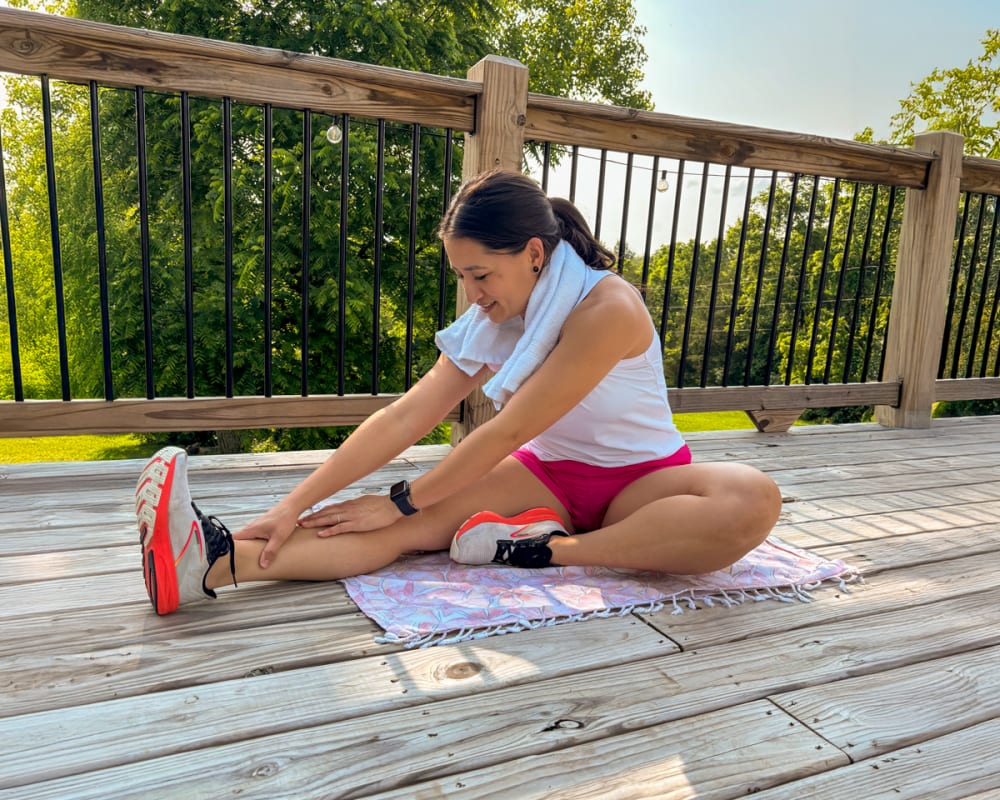A No-Stress Guide to Half-Marathon Training

By Emily Kho, Contributing Blogger
There’s something incredibly motivating about signing up for a half-marathon. Whether you’re chasing a personal best or simply running to prove to yourself that you can, training for 13.1 miles is a journey that builds strength, discipline, and self-confidence—one mile at a time.
If you’re gearing up for your first (or next) half-marathon, this guide breaks down what to expect, how to train smart, and how to stay consistent without burning out.
Build a Balanced Weekly Routine
A typical half-marathon training plan lasts 8 to 12 weeks. Most plans follow a weekly rhythm to help you gradually build mileage, allowing your body time to recover.
Here’s a simple weekly structure to follow:
-
1 long run (your endurance builder)
-
1–2 easy runs (active recovery)
-
1 speed or tempo session (to improve stamina and pacing)
-
1–2 rest or cross-training days (essential for recovery)
You don’t have to be perfect—just consistent. If you miss a day, don’t panic. The goal is to progress, not punish.
The Long Run is Your Superpower
Your weekly long run is the heart of your training. This is when your endurance builds, your mental toughness sharpens, and your race-day legs are made.
Tips for long-run success:
-
Start at a conversational pace—you should be able to speak in full sentences
-
Increase distance gradually (by no more than 10% each week)
-
Use this time to practice race-day fueling, hydration, and pacing
Don’t skip your long run, but also don’t stress if you need to slow down or walk parts of it. These runs are about time on your feet, not perfection.
Listen to Your Body
Injury prevention is all about knowing when to push and when to pause. If something feels off, take it seriously. Soreness is normal—sharp pain is not.
Prioritize:
-
Rest days (yes, they’re productive)
-
Stretching and foam rolling post-run
-
Adequate sleep and nutrition
Cross-training activities like swimming, cycling, or yoga are great ways to stay active while giving your joints a break.
Taper Before Race Day
The final 1–2 weeks before your race are for tapering—reducing your mileage and intensity so your legs are fresh and rested. You might feel restless or worry you’re losing fitness, but trust that your body is rebuilding and storing energy for race day.
Stick to shorter runs, get good sleep, and stay hydrated. Your job during taper week is simply to show up calm, prepared, and confident.
Outfit Highlight: Your Go-To Running Look
When you're logging dozens of miles during training, your gear matters more than you think.
The Step It Up Running Short (pictured here in Pink, size small) is designed for distance. They are lightweight and breathable, featuring a built-in liner and an adjustable waistband for minimal distractions.
The On the Run Tank (pictured here in White, size small) will keep you cool through tempo runs, long runs, and race day with its barely-there feel, breathable fit, and mesh paneling.
Together, this outfit was made for performance, and the proof is in the miles.
Final Thoughts
Training for a half-marathon is about so much more than race day. It’s about discipline, body awareness, and showing up when you don’t feel like it.
The finish line is a celebration, but the transformation happens in the training.
Whether you're running to compete or complete, you’re doing something powerful. Keep going—mile by mile, day by day.